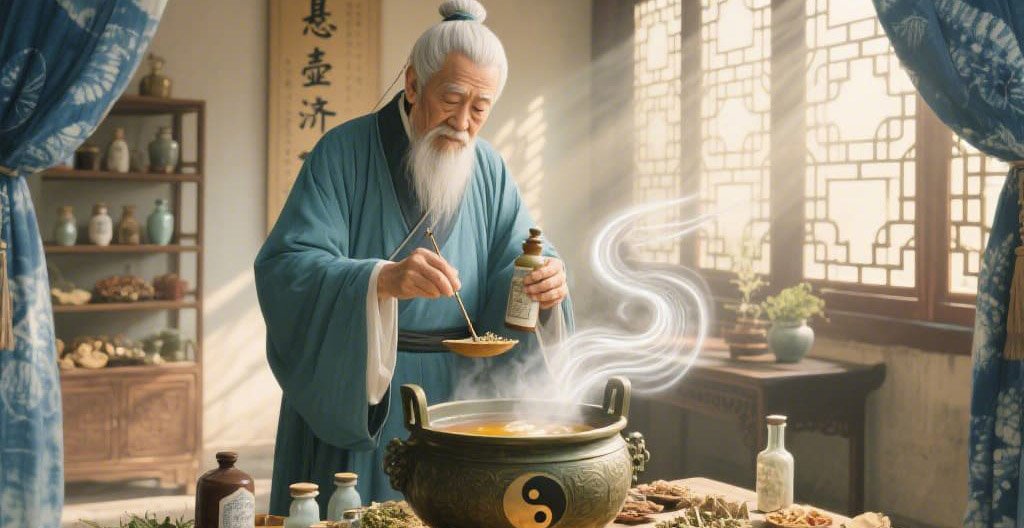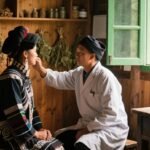Qiuna Gabo (Uterine Fibroids)
Overview
In Miao medicine, uterine fibroids are called Qiuna Gabo. This condition arises when a woman’s constitution is weak and she is exposed to external pathogens, or when emotional distress leads to qi deficiency or stagnation. Blood circulation slows, pathological masses form over time, and accumulate in the uterus as palpable lumps.
In TCM, uterine fibroids (zheng pi) occur when righteous qi is insufficient, wind–cold pathogens invade, or diet, emotions, or sexual activity impair organ function. Qi stagnation, blood stasis, and phlegm–damp aggregates converge in the uterine cavity, gradually forming firm masses.
In Western medicine, the exact cause of fibroid formation is unclear but may involve smooth muscle cell mutations, hormonal changes, or local growth factor alterations.
Huhoujipeng · Miao Disease Classification
This is considered a minor disorder.
Aiduojiang · Causes
Fibroid development is closely related to constitutional weakness, invasion of the “six evils” (wind, cold, heat, damp, dryness, fire), emotional imbalance, or mind–body injury.
Gengduomeng · Pathogenesis
Insufficient righteous qi allows pathogens to invade. Cold congeals blood in the uterine vessels, causing stasis and mass formation. Spleen deficiency fails to transform fluids, producing phlegm that binds with blood. Emotional injury leads to liver qi stagnation, qi stagnation transforms into blood stasis, and over time masses form in the uterine cavity.
Diagnostic Key Points
Diagnostic Basis
(1) Palpable lower abdominal or uterine masses, often with menstrual irregularities (prolonged period or heavy flow) or lower abdominal pain.
(2) History of emotional depression, pathogen exposure during menstruation or postpartum, menstrual irregularity, or abnormal vaginal discharge.
(3) Exclusion of other gynecological conditions.

Related Exams
Serum and urine HCG, ultrasound, CT, MRI, laparoscopy, or hysteroscopy to confirm fibroid diagnosis.
Differential Diagnosis
Qiuna Aluo (Persistent Lochia) also features prolonged postpartum bleeding. Qiuna Aluo stems from constitutional deficiency and cold invasion causing continuous lochia. Qiuna Gabo presents with uterine lumps, menstrual prolongation or heaviness, and lower abdominal pain.
Syndrome Differentiation & Treatment
Manifestations: Lower abdominal and lumbar pain, menstrual irregularity, yellow foul-smelling vaginal discharge, irritability, poor appetite, weakness, dry mouth, restless sleep with many dreams, lower abdominal coldness, and constipation.
Meridian Attribution: Both cold and heat meridians involved.
Principles: Invigorate blood, reduce swelling (huo xue xiao zhong); resolve accumulation (xiao ji).
Prescription & Explanation:
(Goji Berry, gou qi zi) 20g
(Scutellaria Barbata, ban zhi lian) 15g
(Melia Toosendan Fruit, ku dong zi) 10g
(Hedyotis Diffusa, bai hua she she cao) 20g
(Red Peony Root, chi shao) 10g
Decoction taken orally.
Herb Actions:
Goji Berry, gou qi zi (warm, sweet): nourishes liver and kidneys.
Scutellaria Barbata, ban zhi lian (cold, bitter): clears heat, detoxifies, invigorates blood, reduces swellings.
Melia Toosendan Fruit, ku dong zi (cold, bitter–astringent, slightly toxic): disperses liver heat, moves qi, relieves pain.
Hedyotis Diffusa, bai hua she she cao (neutral, mildly sweet): promotes urination, reduces swelling.
Red Peony Root, chi shao (cold, bitter): invigorates blood, reduces stasis, alleviates pain.
Prevention & Care
Adequate rest and moderate exercise.
Avoid wind and cold; maintain a pleasant mood.
Notes
Miao medicine holds that all things arise from the interplay of energy (qi), matter (blood), and structure. Fibroid formation is linked to constitutional weakness, pathogen invasion, and emotional disturbance. Treatment focuses on invigorating blood, dissolving masses, and restoring harmony.
This article is provided solely for the cultural and educational study of traditional medicine. It should not be construed as medical diagnosis or (used in traditional contexts). Before applying any of the therapies described above, you must first consult a licensed physician in your jurisdiction.


Leave a Reply